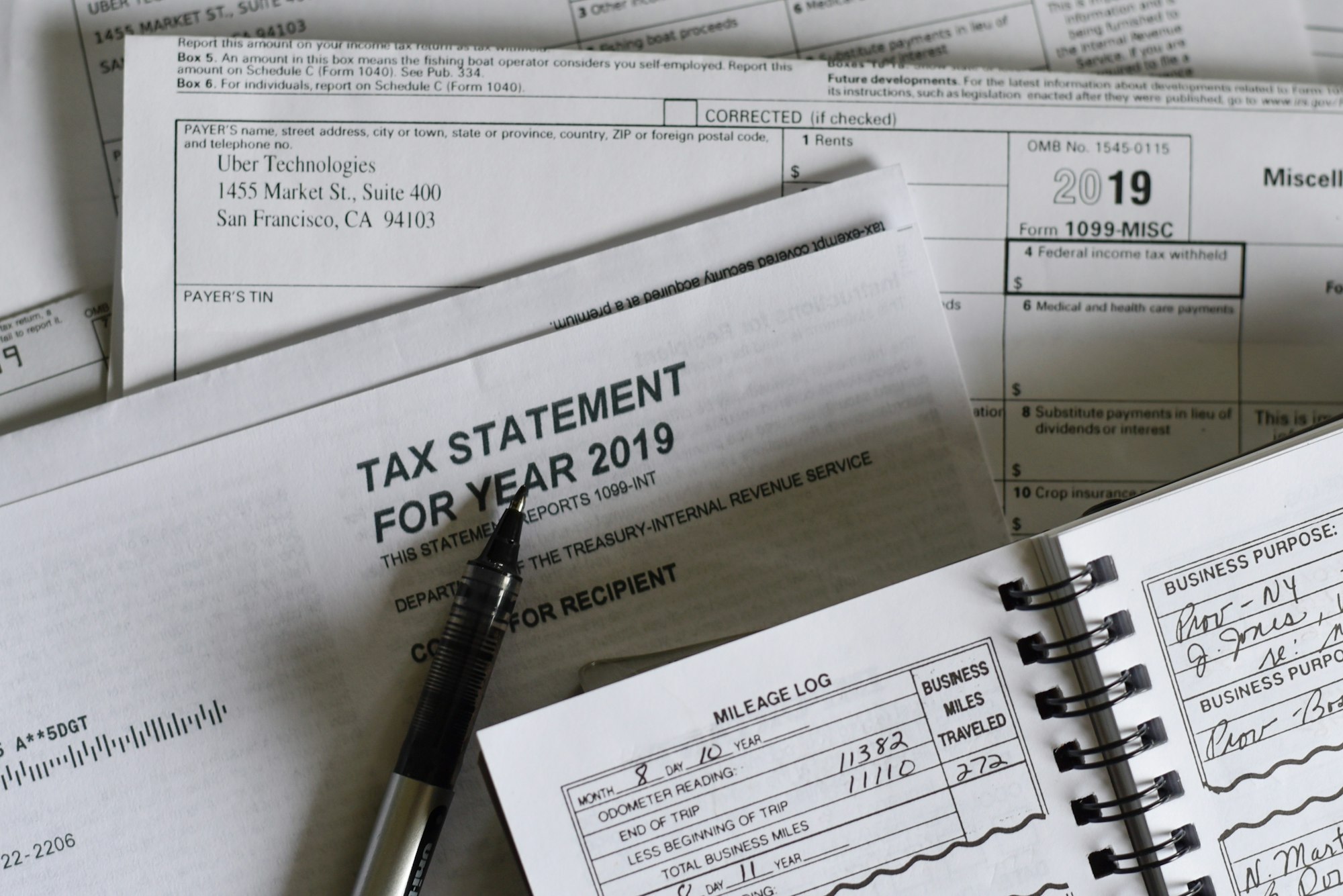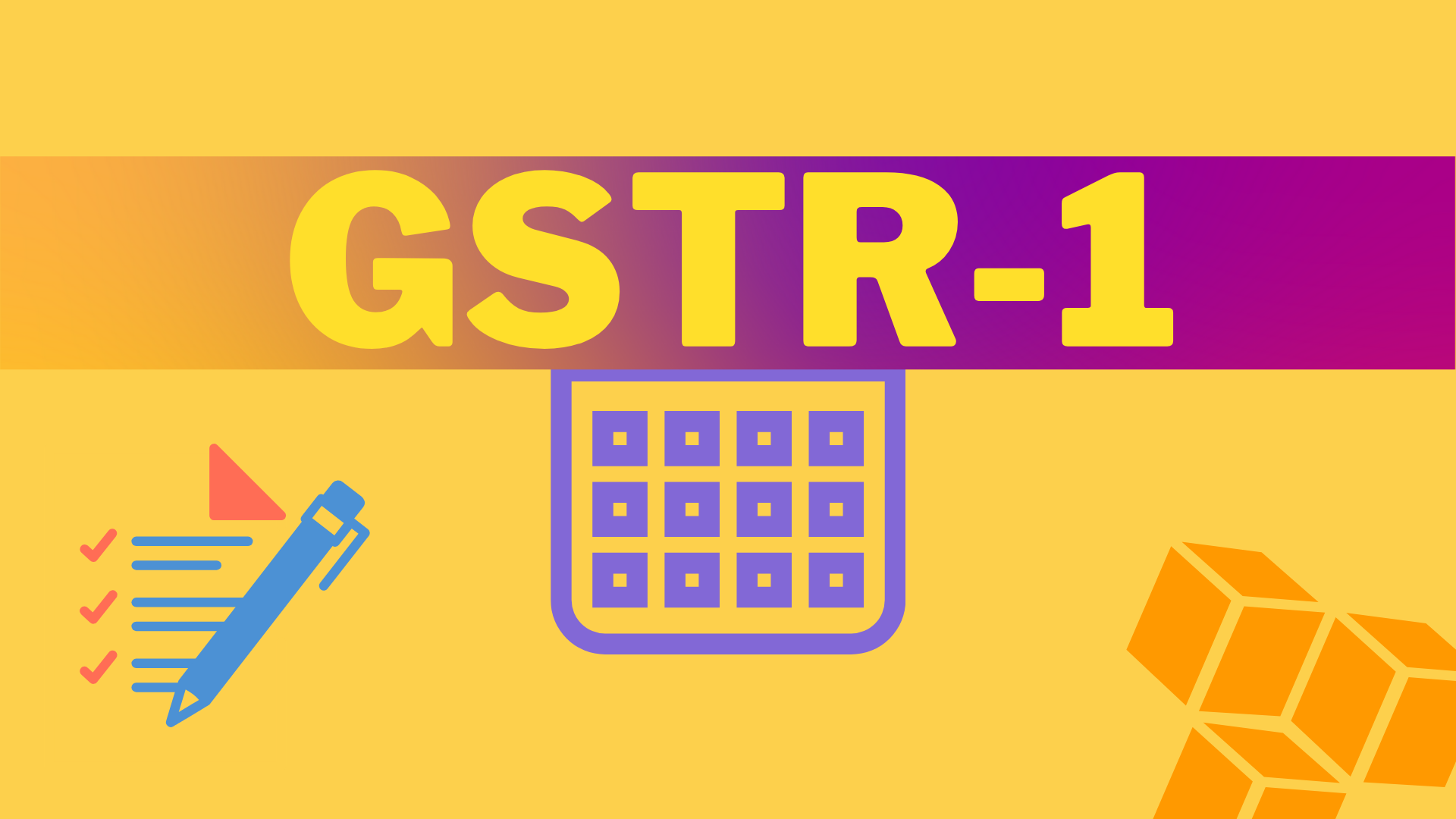As a registered business, the taxpayer can file GST returns monthly, quarterly, or annually. Filing a GST return is a mandatory document for the taxpayers registered under the GST law, holding the GSTIN number.

There are around 22 types of GST returns, but only 11 are active, and the rest are in view only of nature.
This article will cover the types of GST returns in detail along with the following:
• What is the GST Return?
• Types of GST Returns
• Date of filing of GST Returns
• General instructions related to return filing
• How can Deskera help businesses?
What is the GST Return?
A GST return is a document that contains the details of income, sales, purchase & expenses of the business houses. In general words, a GST return is a firm that a taxpayer must file and submit with the tax authorities. The document is also used by the tax authorities to calculate the net tax liability.
Under the GST return filing procedure, details related to
- Outward supplies
- Inward supplies
- GST on input
- GST on output
- Other particulars
It needs to be uploaded depending upon the type of GST return demanded by the taxpayer.
Types of GST Returns
The type of GST return is dependent on the kind of taxpayer registered under the GST. Here, the types include composition taxable person, TDS deductors, non-resident taxpayers, regular taxpayers, casual taxable person, etc.
Moreover, the date of filing is also different from each other.
Let's take a look at the following types of GST returns in detail:
- GSTR-1
- GSTR-2A
- GSTR-2
- GSTR-3B
- GSTR-4
- GSTR-5
- GSTR-5A
- GSTR-6
- GSTR-7
- GSTR-8
- GSTR-9
- GSTR-9A
- GSTR-9C
- GSTR-10
- GSTR-11
1. GSTR-1
GSTR-1 is the return meant for reporting the details of all outward supplies of goods and services. In other words, the sales made by the taxpayer during the particular period containing the invoices and debit & credit notes raised on those transactions.
GSTR-1 applies to suppliers and sellers.
Also, suppose there are any amendments related to invoices, debit, or credit notes during this year or the previous tax period. In that case, it should also be reported under GSTR-1 return.
2. GSTR-2A
The GSTR-2A is a read-only document. As soon as the supplier uploads the details in GSTR-1, this document gets auto-populated. The GSTR-2A enables the recipient to verify the details uploaded by the supplier in the previous form.
GSTR-2A is also applicable to all suppliers and sellers
For example, if an invoice is missing, the buyer can communicate with the seller and redirect to upload it in the GSTR1. It's cross-checking the information mentioned in GSTR-1 that gets reflected in the GSTR-2A.
3. GSTR-2
The GSTR-2 is the return applied to the registered buyers to share the inward supplies of goods and services. In other words, the purchases made during the tax period.
The details of the GSTR-2 return are auto-populated from the GSTR 2A. You can have the option to edit the form and make necessary changes if required.
4. GSTR-3B
GSTR-3B is a return that showcases the monthly summary return of outward supplies and inward supplies made during the tax period. It also includes the details of input tax credit claim taxes paid and the details of tax liability.
This form applies to all regular taxpayers.
It should be made sure that the sales and input tax credit details should be reconciled with the GSTR-1 & GSTR-2B. If case details don't match, it may lead to GST notices and suspension of the GST Registration.
5. GSTR-4
The GSTR-4 is a return that needs to be filled by the composition taxable person under GST.
The return applies to the taxpayers who have a turnover of up to Rs. 1.5 crores and pay taxes at a fixed rate of period.
6. GSTR-5
The GSTR-5 is a return that must be filed by non-resident foreign taxpayers registered under GST and those who carry out business transactions in India.
The return contains the details of inward supplies, outward supplies, tax payable, interest, penalty, or any other amount applicable.
7. GSTR-5A
The GSTR-5A is a summary return of the outward taxable supplies and tax payable by the Online Information and Database Access or Retrieval Services (OIDAR) provider under GST.
8. GSTR-6
The GSTR-6 is a return filed monthly by an Input Service Distributor (ISD).
The return contains the summary of the total input tax credit available and distributed during the month. Also, include the details of documents issued for the distributor and the manner of distribution.
9. GSTR-7
The GSTR-7 is a return filed monthly by the person required to deduct TDS (Tax Deductible at Source) under GST.
The return contains TDS, TDS refund, liability towards TDS, and interest or late fees paid.
10. GSTR-8
The GSTR-8 is a return filed monthly by the e-commerce operators registered under GST and those required to collect tax at source (TCS).
The return also contains the details of all supplies made through the e-commerce platform and TCS collected.
11. GSTR-9
The GSTR-9 is an annual return filed by the taxpayers registered under GST.
The return contains the details related to outward supplies & inward supplies under the tax column of CGST, SGST, and IGST. This also covers the summary value of supplies reported under every HSN code, along with the details of taxes payable.
To be precise, GSTR-9 consolidates all the monthly and quarterly returns filed during the financial year.
12. GSTR-9A
The GSTR-9A is an annual return document required to be filed by the composition taxpayers.
This return is an addition to the quarterly returns filed by the composition dealer.
It contains the details like inward and outward supplies, input tax credit availed and reversed, tax refunds, tax paid, or late fees.
13. GSTR-9C
The GSTR-9C is a reconciliation statement filled by all taxpayers registered under GST.
This applies to the taxpayers whose turnover exceeds rupees 2 crores in a financial year who needs to get their accounts audited by CA or a cost accountant.
You can easily find the statement under the section GSTR-9C.
14. GSTR-10
The GSTR-10 is a return filed by the person whose registration has been canceled or surrendered.
This is regarded as the final return that a taxpayer returns under GST.
15. GSTR-11
The GSTR-11 is a return filed by the person allotted a Unique Identification Number (UIN).
The purpose of the UIN provided to the registered person is to claim a refund for the GST paid on the goods and services purchased by them.
The GSTR-11 will contain the details of inward supplies received, and refund claimed.
Well, these were the major 15 types of GST returns applicable under GST Law.
Date of filing of GST Returns
As already mentioned, the date of filing GST Returns is different and depends on the type of returns.
The date of filing GST Returns for different types of returns can be explained with the help of the following table:
General instructions related to return filing
Following are the list of general instructions related to return filing under GST:
- Return filing of GST is mandatory. Even if the business house has got nil transaction, still they need to file an annual return.
- You are not entitled to file the return if you haven't filed the quarter's/month return.
- If there is any late filing of GST returns, it may lead to heavy fines and penalties.
- The interest applicable for late filing is 18% per annum. The interest is calculated by the taxpayer on the amount of outstanding tax to be paid.
- As far as late fees are concerned, the late fee is entitled to rupees 100 per day, applicable to CGST and SGST. This makes it a total of rupees 200 per day.
- There is no late fee prescribed under IGST Act.
- For late filing of GSTR-1 and GSTR-3B, the total fee is reduced to rupees 50 per day.
How can Deskera help businesses?
Discover how you can combine accounting, finances, inventory, and much more under one roof with Deskera Books. It's now easier than ever to manage your Journal entries and billings with Deskera. The remarkable features, such as adding products, services, and inventory, will all be available to you from one place.
Deskera is an all-in-one software through which you can combine accounting, financial management, inventory management, and many more such features using Deskera Books.
It's now easier than ever to manage your Journal entries and billings with Deskera. The remarkable features, such as adding products, services, and inventory, will all be available to you from one place.
Experience the ease of implementation of the tool and try it out to get a new perspective on your accounting system.
With the guiding and informative videos on how to manage and set up India GST, you can learn about and familiarize yourself with the process in just a few minutes.
Deskera Books is a time-saving strategy for managing your work contacts, invoicing, bills and expenses. In addition, opening balances can be imported and chart accounts can be created through it.
While the taxation regimes followed by most countries tend to be intimidating and nerve-wracking, the key to understanding them is by starting to understand each of their nitty-gritty. In the case of GST in India, this involves understanding the Forms GSTR-1, GSTR-2A, GSTR-2B, GSTR-3B, the difference between GSTR-9 and GSTR-9C, reverse charge mechanism under GST, and many more such details.
While this seems a lot to take in, the businesses can be relieved that Deskera Books handle their accounting. Be it tracking financial KPIs, marketing KPIs, journal entries, financial statements, invoices, account receivables, and accounts payable, Deskera Books will do it all for them- including making it easier to comply with the taxation regime of the base country.
Deskera Books is a time-saving strategy for managing your work contacts, invoicing, bills and expenses. In addition, opening balances can be imported, and chart accounts can be created through it.
Key Takeaways
In this article, we discussed everything about the types of GST returns, the date of filing, and instructions.
Let's take a look at the key takeaways of the article:
- The filing of GST return is a mandatory document
- GST return is a document that contains the details of income, sales, purchase, and expenses of business houses
- The type of GST return is dependent on the type of taxpayer register under GST
- There are prominent 15 GST returns applicable to different taxpayers
- The date of return of filing of GST returns depends on the type of GST
- Return filing of GST have specific principal instructions that need to be followed by the taxpayer
- If the taxpayer fails to file a GST return, then he needs to pay the penalty and interest as applicable
Related Articles










